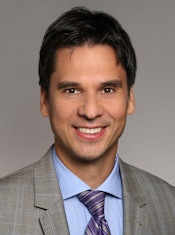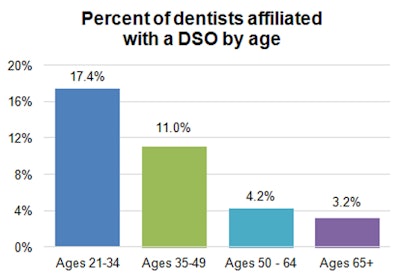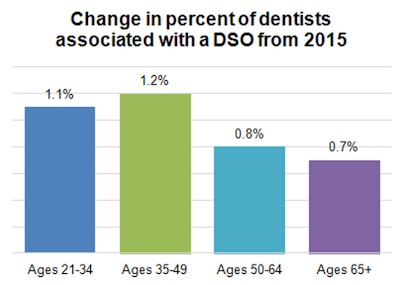
More dentists than ever were associated with dental service/support organizations (DSOs) in 2016, and that number is expected to rise, according to new data from the ADA Health Policy Institute. These organizations were also in more states in 2016 than the previous year.
 Marko Vujicic, PhD. Image courtesy of the ADA.
Marko Vujicic, PhD. Image courtesy of the ADA.This is the second year that the Health Policy Institute compiled data on DSO affiliation. In a November 1 webinar discussing the reports, the institute's chief economist, Marko Vujicic, PhD, said DSO affiliation is just one of multiple ownership trends that share the same theme: Group practice is on the rise.
"They're all kind of pointing in the same direction -- dentists organizing themselves in larger groups," said Vujicic, who is also vice president of the Health Policy Institute. "DSOs are part of that, but there are many, many other models of large group practice that are not what many consider dental service organizations."
Continued rise of DSOs
After noticing the steady decline of solo practices and the rise of DSOs, the Health Policy Institute began tracking DSO association in 2016 and published its first-ever report on the topic earlier in 2017. To come up with the numbers, the institute's researchers used the location data they had for ADA member dentists, including practice addresses. They then cross-referenced the addresses with those on file for companies that are members of the Association of Dental Support Organizations (ADSO) or well-known DSOs that were not ADSO member organizations at the time.
Using that same methodology, the researchers found that 8.3% of dentists were affiliated with DSOs in 2016, up from 7.4% in 2015. They also found sharp age gradients for dentists affiliated with DSOs, with almost 20% of dentists younger than age 35 participating in a DSO.

Dentists of all ages were more likely to be affiliated with a DSO in 2016 than 2015, and the biggest growth happened for dentists ages 35 to 49. More states also had DSO-affiliated practices in 2016 than in 2015.

The Health Policy Institute also found that more women (11%) than men (7%) chose to practice in the dental service organization model, and pediatric dentists (9%) and general dentists (9%) were the specialties most likely to be affiliated with a DSO.
The changing workforce
The increase in the number of dentists affiliated with DSOs aren't the only thing changing about dentistry's workforce. Dentists tend to be younger and more diverse than before, too.
Because of new dental school graduates, the average age of dentists has declined after rising for several years, and more women are dentists than ever before. Dentists are also more racially diverse, although they are generally not as diverse as the rest of the U.S.
In a previous 2017 webinar, Vujicic and other panelists said that student debt could be one of the reasons driving dentists to group practice, but regardless of the cause, Vujicic doesn't think it's a trend that will be slowing down anytime soon.
"Supply-side trends are straightforward," he said. "We're comfortable predicting that we will see a rising supply of dentists. We will see a continued and slow decline in the percent of dentists in solo practice, and [we'll see] continued slow and steady increase of dentists who are organized in larger groups that includes the DSO participation rate but also includes different kinds of larger practice models."



















